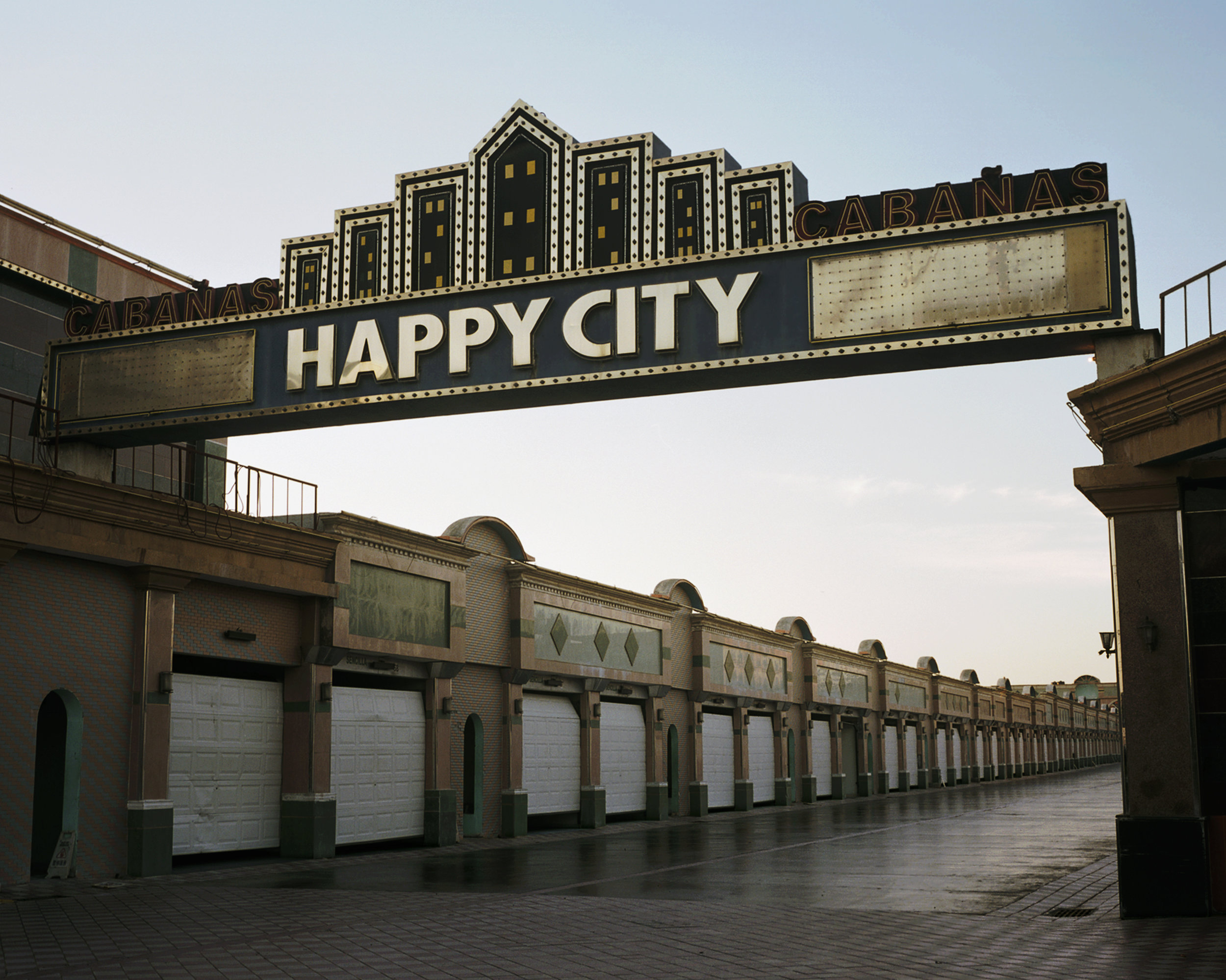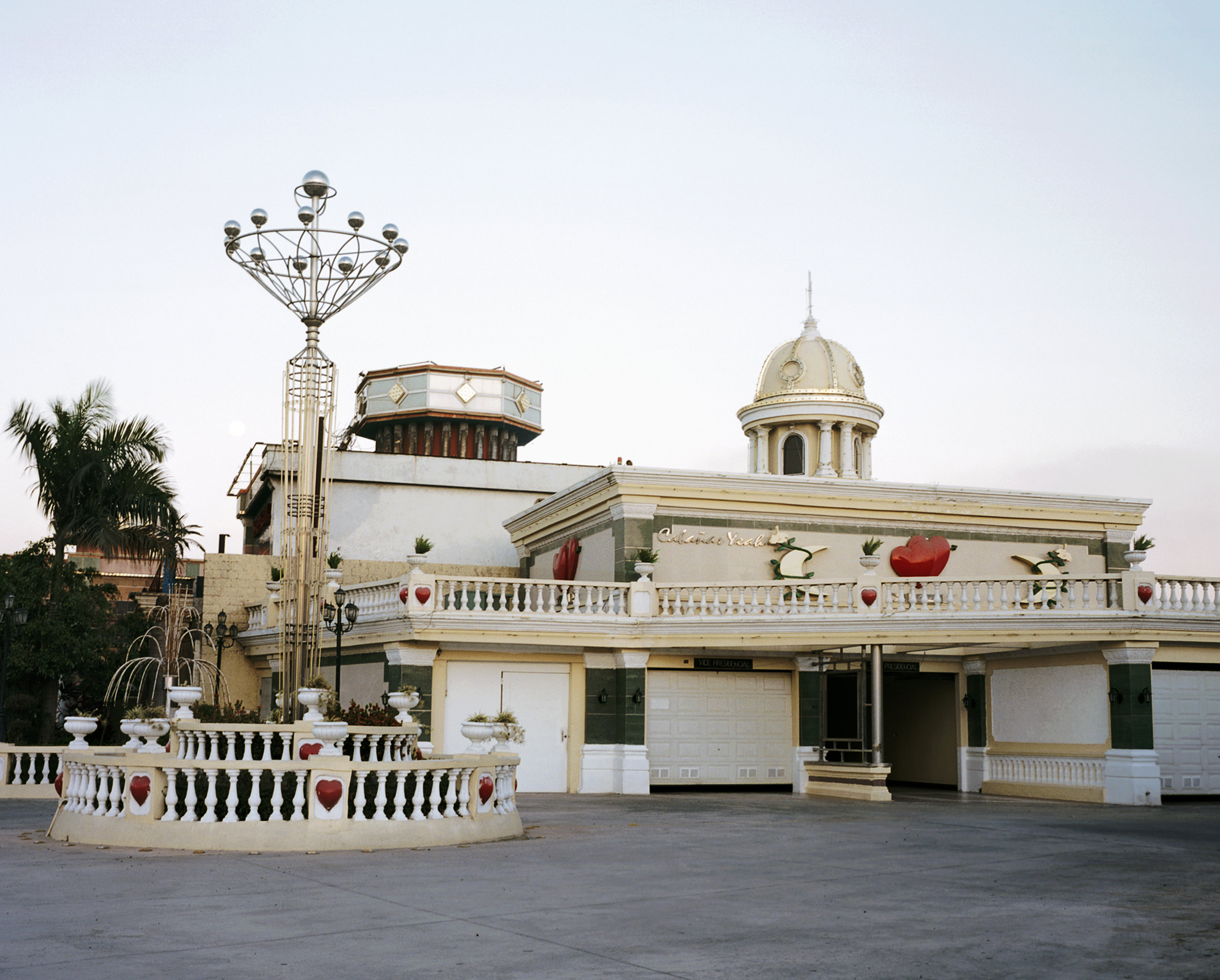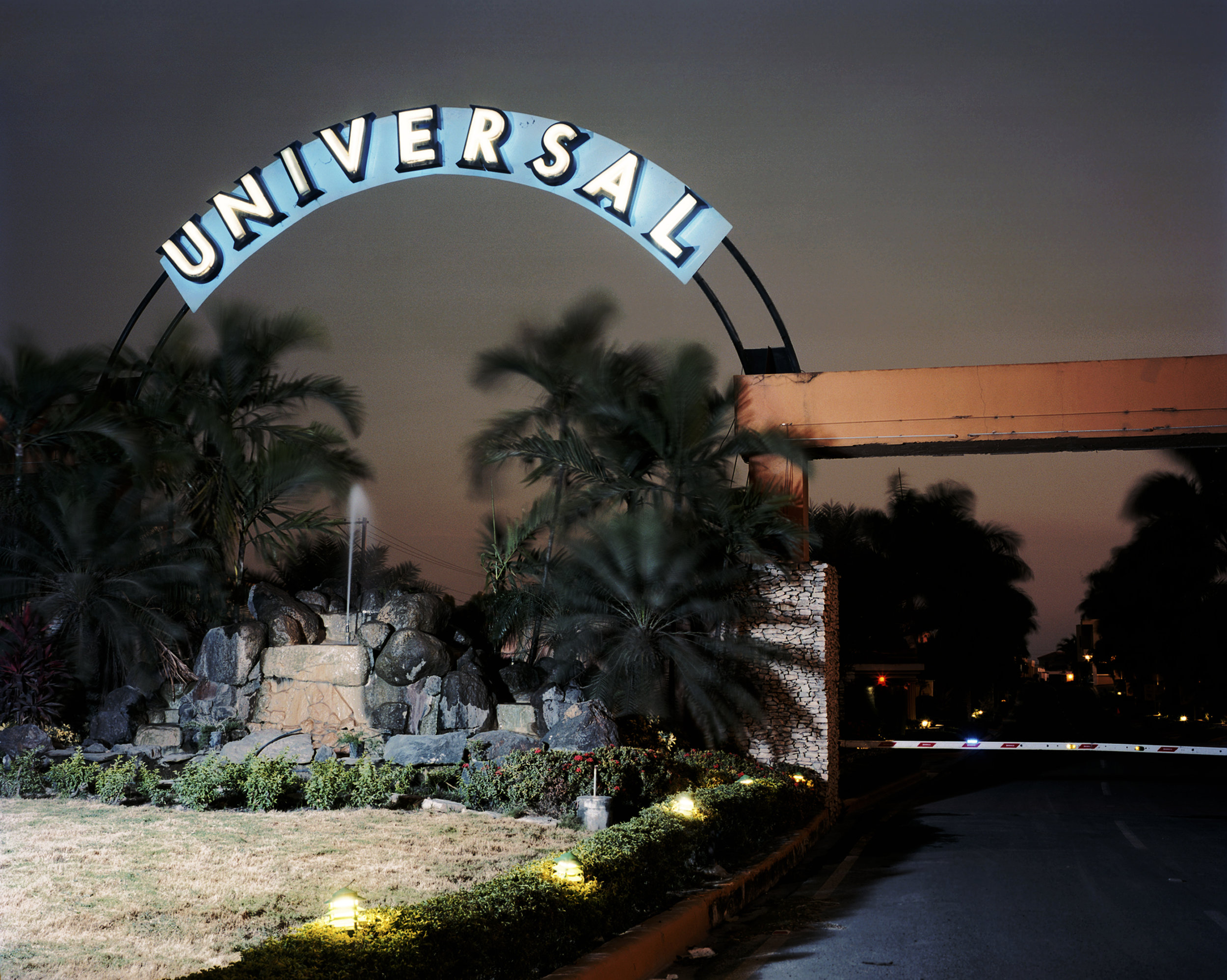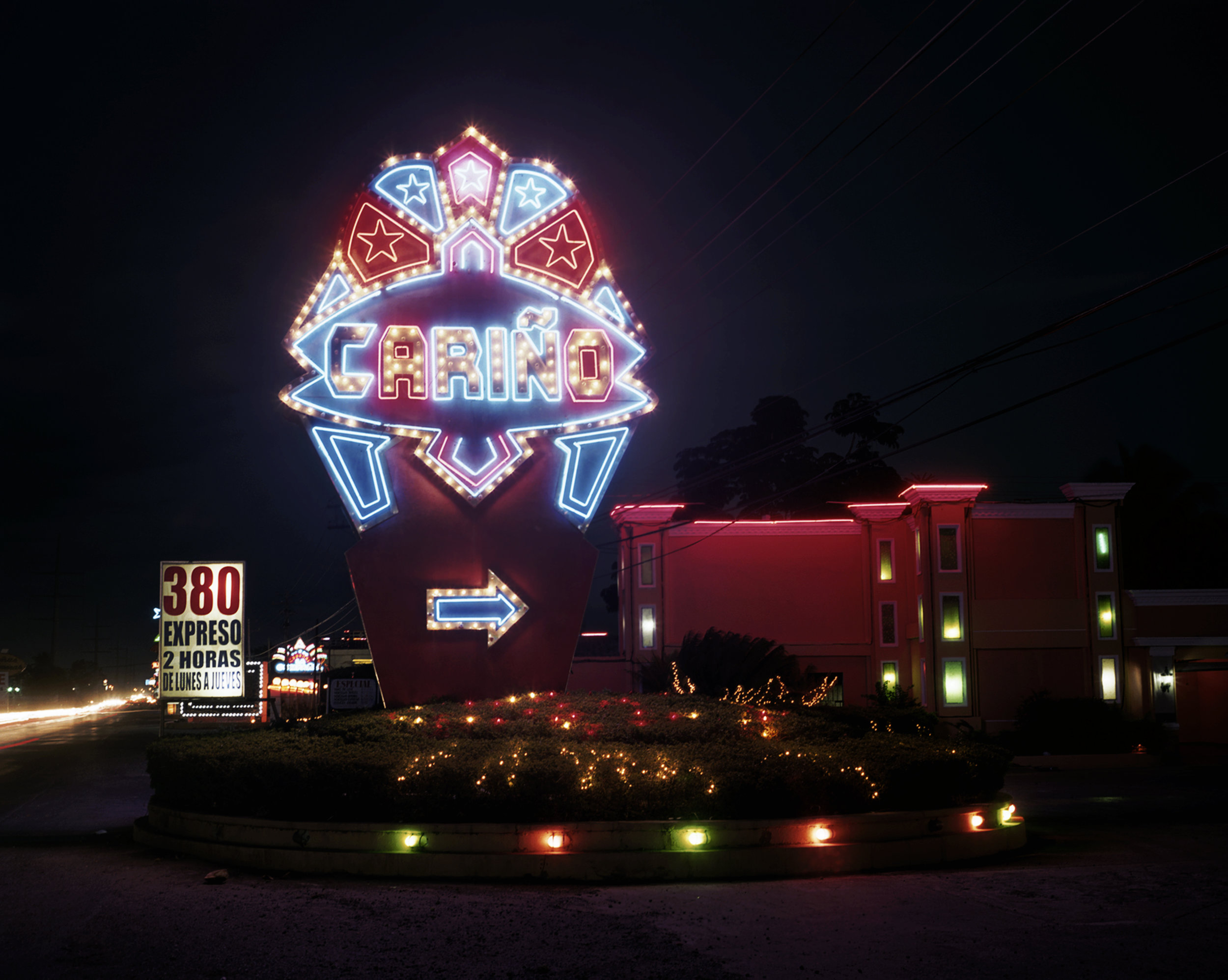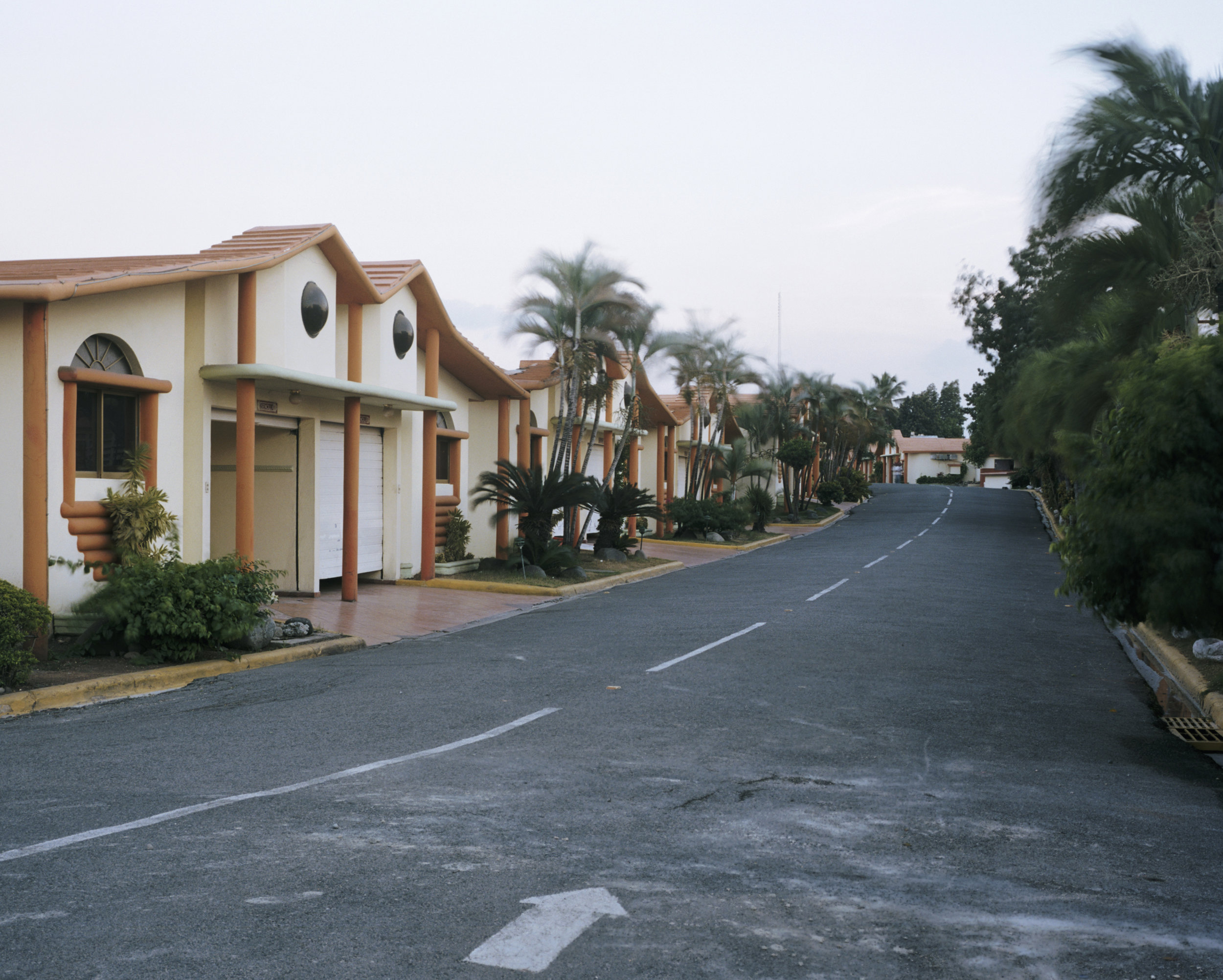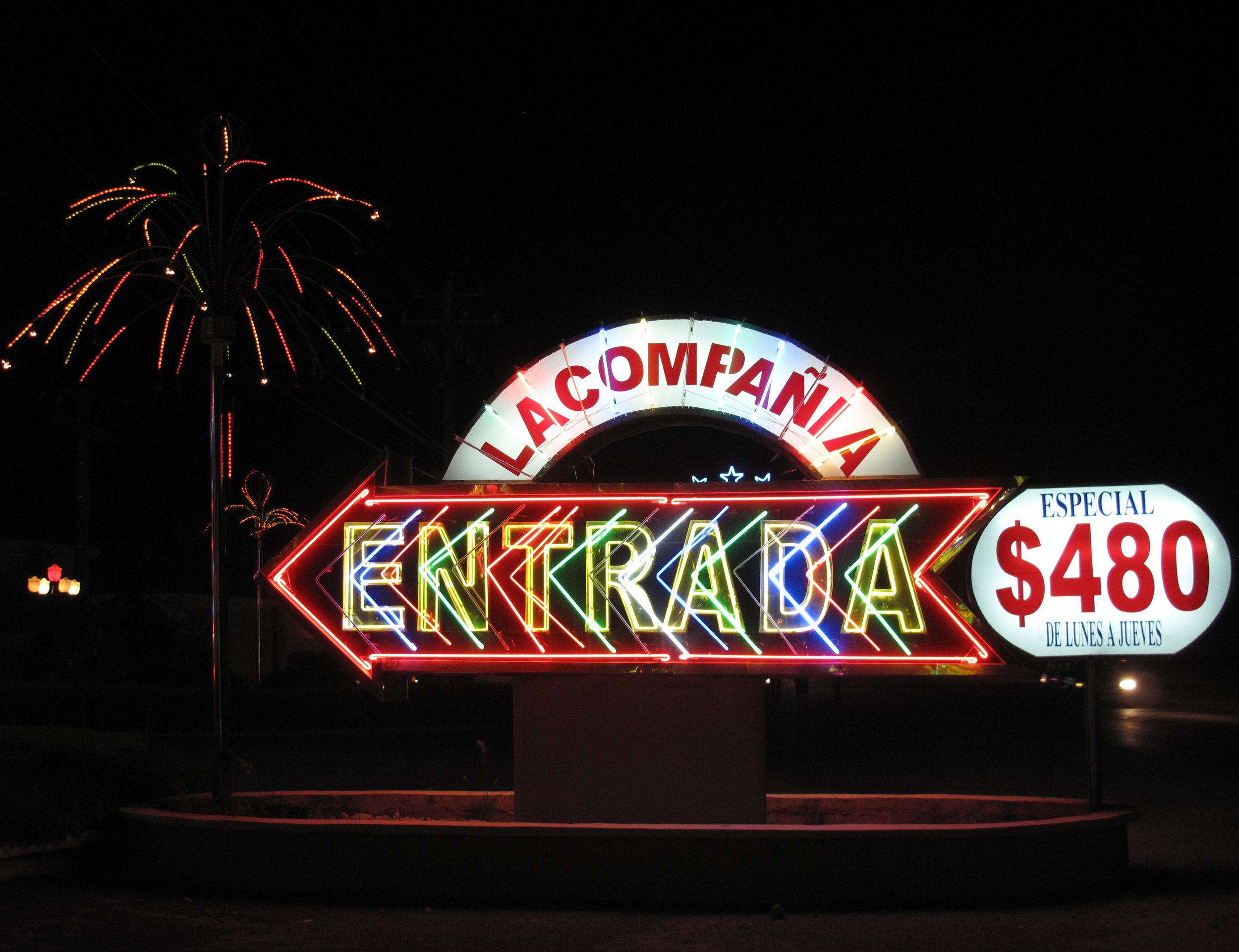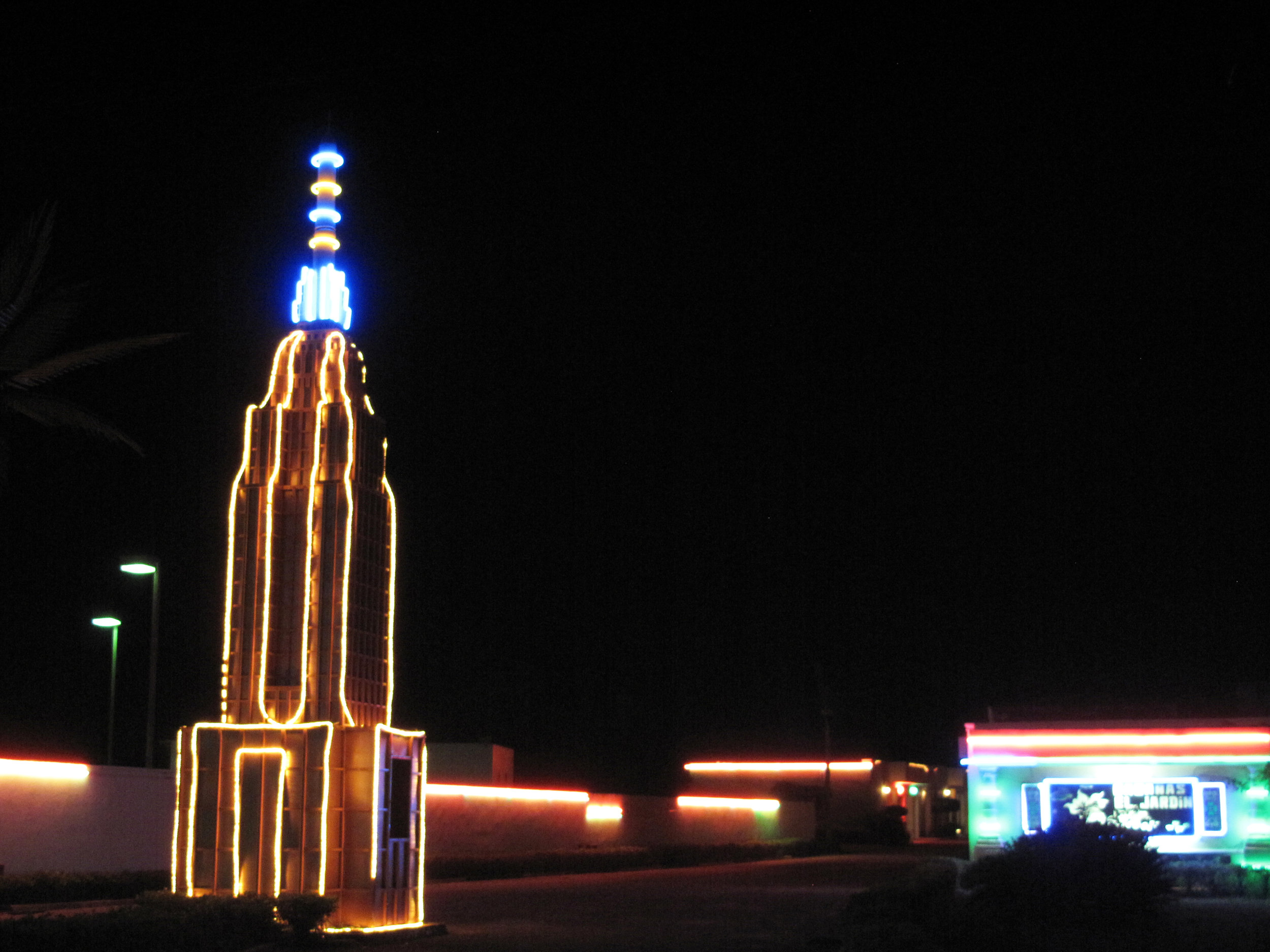Happy City

By Kurt Hollander
In a gritty, industrial neighborhood of Santo Domingo, the capital of the Dominican Republic, a dozen love motels are huddled together along a single inner-city highway littered with car repair shops and gas stations. Even though they were all built around the same time and bankrolled by many of the same investors from China, each is a lavish tribute to a different architectural vernacular.
One motel is designed to look like a regal palace, with majestic cupolas, balustrades and faux-marble walls. Another, with its split-level and bright orange homes, mimics an exclusive suburban community. The motley shaped, pastel-painted, tiny structures of another motel resemble toys for tots. The newest motel on the strip, built less than 10 years ago, looks like an exclusive storage depot. As in Las Vegas, a major source of inspiration for the motel builders, there are small-scale skyscrapers, visual references to Hollywood studios, and exotic architectural references.
The neon lights, the bright colors, the eccentric shapes of these giant motels all create the illusion of true splendor; at night, each is lit up like a movie palace, visible for miles around. As grand as they might appear at first sight, however, the giant structures are made from inexpensive materials and not built to last. Yet it is the cheap glitz, like the tawdry make-up of a street sex worker, that makes these love palaces so attractive to the eye and available at a price that working people can afford.
Like the inverted architecture of Parisian brothels that hide their inner splendor behind dim, drab entrances, these motels, even with all the neon and colors that grace the entrances and facades, hide their true, enormous size and the activity within. Each motel is carefully designed to protect the identity of the users that choose to stay there for an hour or two. Cars pull off the highway, drive down long paved roads and park inside of a garage. When the garage door closes, the users enter their room unseen, free to indulge in their own sexual fantasies in lavish rooms complete with giant beds, ceiling mirrors, Jacuzzis, saunas, porn channels on large-screen televisions and potent music systems.
As tacky or kitsch as they may appear, these love motels offer a distinctive setting well suited for uninhibited sex - something that this uptight, overly materialistic world sorely needs.
Kurt Hollander is a writer and fine art/documentary photographer. His photography work has been exhibited throughout the Americas and can be seen on his website: kurthollander.com. He is currently working on a long-term book and exhibition project in Cali, Colombia that deals with the architecture of sex.

